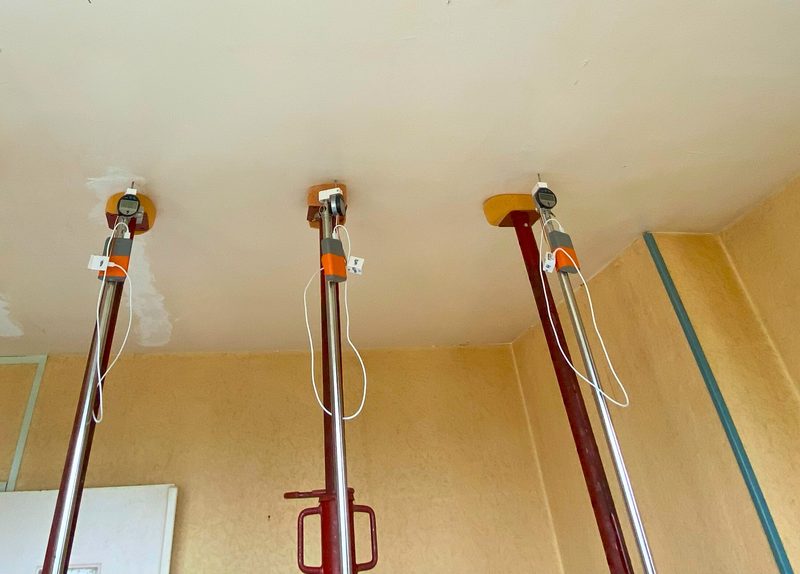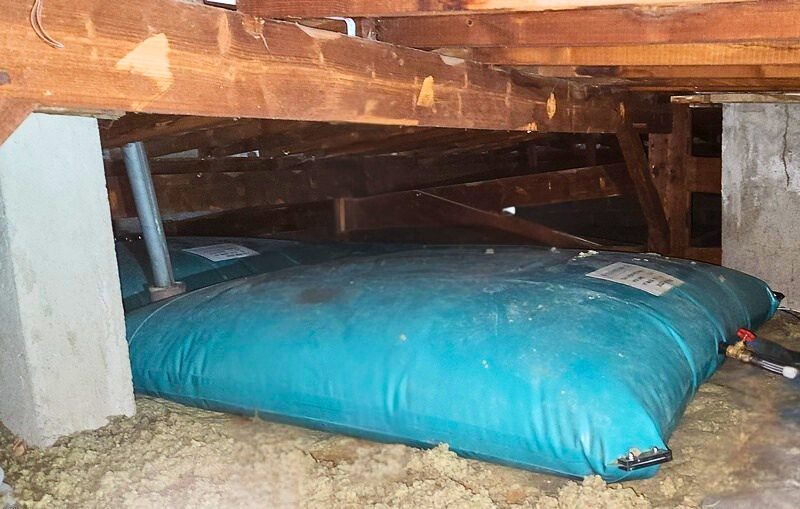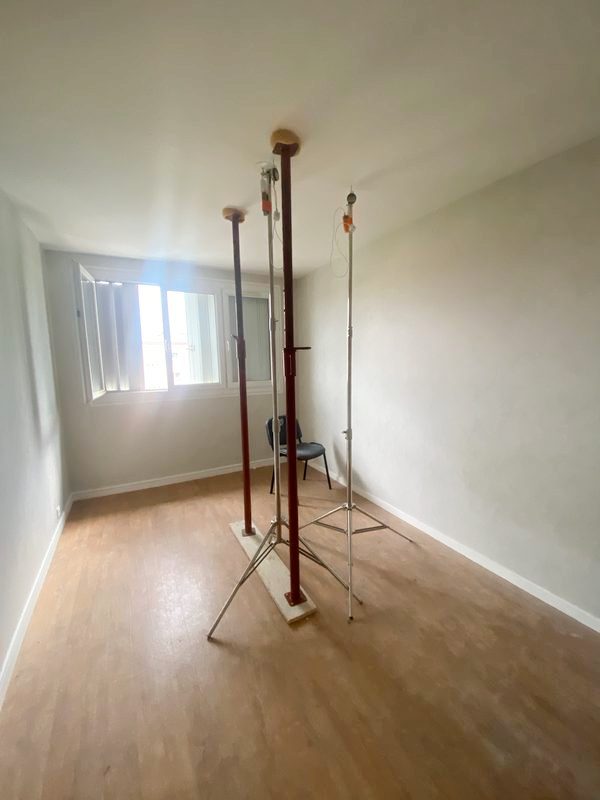Context
As part of a rehabilitation and vertical extension project, CIDECO conducted a series of load tests on the floor slabs of a residential complex in Laval.
The experimental campaign aimed to compare theoretical design assumptions with the actual performance of the structures, providing the project owner with a reliable and objective assessment of the slabs’ load-bearing capacity.
The initial diagnosis, carried out by another engineering firm, had concluded that the existing floors could not withstand the additional loads required for the extension.
To validate or challenge these results, CIDECO was commissioned to perform in-situ load testing.
The goal was to characterize the real structural behavior, confirm or refute the assumed continuity of the slabs, and determine the admissible load-bearing capacity before works.
Operations
The tests, carried out in July 2025 on two buildings, focused on two structural typologies:
- Reinforced concrete joist-and-hollow-block floor, 20 cm thick (Building 1)
- Solid reinforced concrete slab, 15 cm thick (Building 2)
The testing protocol included:
- Use of flexible water-filled tanks to simulate loads
- Continuous measurement using electronic flowmeters and connected dial gauges
- Non-blocking safety shoring to ensure stability while allowing free vertical movement
- Continuous visual inspection to detect any cracking
Progressive load stages reached up to 430 daN/m², reproducing realistic service load conditions.
Methods and expertise
CIDECO’s methodology relies on connected instrumentation and real-time monitoring to control tests and analyze deformations with high precision.
The results revealed distinct behaviors:
- Building 1: no correlation between spans, confirming an isostatic behavior of the joist system
- Building 2: structural continuity confirmed through correlated deflections between adjacent slabs
Measured deflections were remarkably small: 0.075 mm for joists and 0.031 mm for slabs.
No cracking was observed during or after testing, confirming fully elastic behavior.
Added value
This testing campaign demonstrated that the slabs safely resisted loads up to 400 daN/m² without any structural distress. These results, contradicting the initial theoretical assessment, eliminated the need for unnecessary strengthening and confirmed the feasibility of the vertical extension.
Beyond verification, CIDECO’s experimental approach transforms calculation uncertainty into measured structural proof, ensuring safety, reliability, and economic optimization of the project.
To find out more : Load testing




